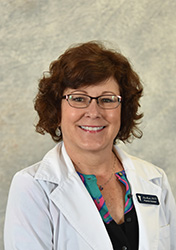Category Archives: Preventative Care
Pain Management and Opioid Prescribing at MPCP
In this video, Dr. John Billon explains how to recognize when someone is abusing opioids.
By: Jerry Levine, M.D. FACP, Vice President & Medical Director
Pain management is a real problem that our MPCP providers treat on a regular basis. The CDC estimates that 11% of adults experience daily pain. There is no question that over-prescribing of legal opioids, as well as the use of illegal opioids, has caused an epidemic of opioid abuse in Maryland.
What we do to protect you
We at Maryland Primary Care Physicians practice pain management to ensure patients have access to safer, more effective treatment while reducing the risk of opioid abuse, overdose, and death.
MPCP providers strictly follow the guidelines established in Maryland for narcotic prescribing. When prescribing any controlled medication such as opioids, the prescription is cleared through the state prescription drug monitoring program (PDMP). This is an electronic database that tracks controlled substance prescriptions at the time of prescribing. This can help identify patients who may be misusing prescription opioids or other potential medication abuse.
All of our providers also follow the published CDC guidelines for prescribing opioid medication. This is not only consistent with good clinical practice, but it is also required by the State Board of Physicians and is enhanced by continued education required to maintain a medical license in Maryland.
In establishing our goals of treatment, we first consider non-pharmaceutical and nonopioid therapy. We strongly encourage integrated pain management and collaborative working relationships with other providers (physical therapists, physical medicine specialists, pharmacists, behavioral health providers, and, importantly, Pain Management Specialists). Consultation and referral is an important part of pain management. Discussion of risk and benefits of therapy with patients, goals of treatment, and duration of medication management is key for effective treatment. At Maryland Primary Care, we have peer review requirements, which not only monitor controlled medication prescribing but allow our providers to consult their peers for pain-management problems.
How you can prevent opioid abuse
Patients can take these steps to ensure safe use of prescriptions:
- follow the directions as explained on their prescription label,
- never change the dose without consulting their provider,
- never use another person’s prescription,
- never share their prescriptions with others.
Storing and disposing of medication properly when treatment is completed is also extremely important. Follow these guidelines from the U.S. Department of Health and Human Services.
Pain management is common to our practice and requires an individualized response. Treatment can be challenging for healthcare providers as well as patients. It is possible to improve the way we manage pain and the way opioids are prescribed. Our goal in treatment at Maryland Primary Care Physicians is to reduce the number of people who misuse, abuse, or overdose from opioids while making sure our patients have access to safe and effective pain management.
 Dr. Levine is a MPCP partner and is certified by the American Board of Internal Medicine. He serves as MPCP’s Medical Director and Vice President, and sees patients at the Columbia office.
Dr. Levine is a MPCP partner and is certified by the American Board of Internal Medicine. He serves as MPCP’s Medical Director and Vice President, and sees patients at the Columbia office.
5 Myths About Childhood Vaccines
By: Daniel Lamphier, M.D.
Vaccinations have been used safely for decades to protect children from diseases such as smallpox, measles, mumps, diphtheria, tetanus and polio. Even so, misinformation about childhood vaccines is widespread, causing some parents to delay or avoid vaccines out of fear they may harm their children.
Here are five common myths about vaccines for kids and the real story about their safety.
Myth 1: The MMR vaccine causes autism.
Autism is a genetic disorder, and this myth arose from a now infamous study published in 1998. The poorly designed study found that 8 of 12 children studied who had received the MMR vaccine displayed autistic behaviors. As no subsequent studies showed similar results, the study was retracted and the author had his medical license revoked for professional misconduct.
Myth 2: Vaccines can make you sick.
You may hear someone say, “I got the flu shot and I got sick.” No vaccine is perfect, and simply getting the vaccine does not mean you cannot become infected, but simply that your likelihood is reduced. A common analogy is the seat belt in your car; you may still get in an accident, but the best protection is still advisable. Additionally, it is always easier to remember the year that you got the flu after getting the flu shot than the many years you may not have become ill.
Some people think that because vaccinations contain traces of viruses or bacteria they can cause the diseases they’re supposed to prevent. Fortunately, vaccines contain dead or inactivated viruses or bacteria, designed to prompt an immune response without causing illness. Vaccines can’t make you ill, but some people may have mild reactions to them, such as soreness at the injection site or flu-like symptoms after getting a flu shot.
Myth 3: Vaccines contain harmful chemicals.
Many ingredients in vaccines have been pointed to as “toxic,” including mercury, formaldehyde, and aluminum. Mercury is indeed a dangerous substance but is only contained in some multidose influenza vaccines presently. Thimerosal, the source of mercury, is in a miniscule amount and in a form that does not build up in the body. Formaldehyde and aluminum are also contained in very low levels, far less than the body sees through other environmental sources. As an example, there is many times more formaldehyde exposure when eating a single pear than in receiving any vaccine.
Myth 4: You should space out childhood vaccines.
The CDC recommends a vaccination schedule for children (see the end of this article), but some parents worry that having so many vaccines may overwhelm their children’s immune systems. Of course, children and adults are exposed to many more foreign substances through the environment around us, and the immune system does not struggle with these.
The challenge with spacing or delaying vaccines is multifold. First, it prolongs the delay until immunity develops to infections that can affect children of any age. Second, it can cause difficulty with daycare, preschool, or kindergarten entry if vaccines are not given on time. Thirdly, if children must come to the office for vaccine catch-up or spaced-out vaccine schedules, they will receive a painful experience many more times than if they are kept on the recommended schedule.
The schedule recommended by the CDC, the American Academy of Pediatrics and the American Academy of Family Practice is continually tested and adjusted to best protect children.
Myth 5: Other people have vaccinated their kids, so I don’t have to.
Many people are current on their vaccinations, providing some protection to the people around them, but not everyone is up to date. If there is a disease outbreak, such as the flu, those who aren’t vaccinated are more likely to get sick. So, you can’t count on other people’s immunity to protect your children.
The bottom line is childhood vaccinations have proven to be safe and effective over many years. Don’t listen to misinformed talk; if you have concerns, ask your doctor.
For an easy-to-read schedule of recommended vaccines for children ages 0-6, click here to view the CDC’s guide.
 Dr. Daniel Lamphier attended George Washington University, School of Medicine & Health Sciences, and is certified by the American Board of Family Medicine. He sees patients in MPCP’s Queenstown office.
Dr. Daniel Lamphier attended George Washington University, School of Medicine & Health Sciences, and is certified by the American Board of Family Medicine. He sees patients in MPCP’s Queenstown office.
Poison Ivy, Oak and Sumac
By: Lisa Meade, PA-C
Poison Ivy, Oak and Sumac are toxic plants native to most parts of the United States. The rash is due to the oil urushiol that is in the roots, stems and leaves. Most people are allergic to this oil. After your skin comes in contact with the oil, the reaction can take up to 72 hours to develop. You do not need to touch the plant directly in order to have a reaction. Clothing, shoes, lawn equipment and pets all can transfer the oil to your skin.
The skin reaction, also called Contact Dermatitis, causes redness, swelling, blisters and itching. If you inhale the smoke from the burning of these plants you can develop respiratory symptoms. Scratching the skin can lead to a secondary bacterial infection. The rash can last several weeks even with treatment.
You can reduce your chances of developing a reaction if you rinse your skin with water thoroughly and wash your clothing immediately after known contact. Once the rash has started, taking an antihistamine and using hydrocortisone cream or Calamine lotion can help reduce the symptoms and speed healing. If you have a widespread rash, pus oozing from the blisters or any respiratory symptoms you should seek medical attention.

The Opioid Epidemic
By John Billon, M.D.
Commonly used narcotics, called opioids, have been in the news a lot lately. This can include heroin, and mediations that are commonly prescribed to treat pain, such as oxycodone and morphine. Unfortunately, opioid abuse has spread in recent years to infect communities across Maryland, putting neighbors – and even family members ─ at risk.
Who is abusing opioids?
The numbers of people abusing these medications and drugs are staggering and continue to increase. Almost a million people now use heroin. In 2016, there were on the order of 42,249 opioid related deaths. This is five times higher than 1999. The rate of infants born withdrawing from opiates has also increased five times over the same time period.
These numbers are hard to ignore. The increases in families affected have left people searching for information on the epidemic and how they can identify when their loved one has a problem.
Is abuse happening here?
Part of the difficulty of fighting the opioid epidemic is the personal myth that it cannot happen to you or a loved one. Recently, Anne Arundel County has an initiative, Not My Child, that spreads awareness and helps remind people that opioids can destroy lives and that the disease does not discriminate. The video, Not My Child, is worth a watch. Not My Child also has an excellent list of local resources to support those affected.
Signs to look for
Here are some signs to look out for if you suspect that a loved one is abusing opioids. Signs may include: emotional withdrawal, getting into trouble, doing worse at work or school, pupils that are small or bigger than normal, and new onset of seizures.
What you can do?
If you identify that your loved one is abusing opioids, they may claim to be just starting. Make sure to start getting them some help because sometimes the problem is further along than claimed. Contact your physician or consider calling the helpline from the Not My Child Program (410-768-5522) if you have questions about what to do or where to go for help.
Learn more
Symptoms of Opioid Addiction
General Information on Opioid Abuse
Dr. John Billion is certified by the American Board of Family Practice and sees patients in MPCP’s Arnold office.




